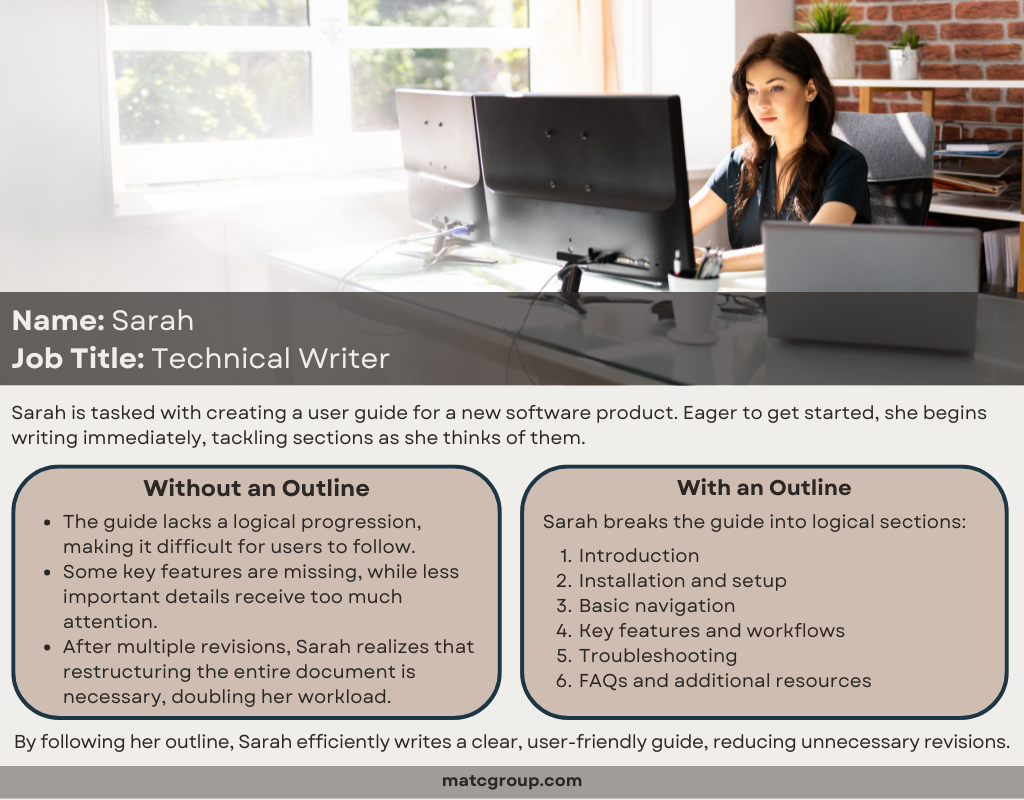- +1 (267) 368-7090
- contact@matcgroup.com
-
53 Knightsbridge Rd,
STE 216
Piscataway, NJ 08854.
Outlines are often overlooked, but they are the backbone of well-structured content. Whether you’re writing a user manual, designing an eLearning course, or crafting a training program, an outline helps you organize ideas, maintain logical flow, and ensure completeness. Without one, projects can become unfocused, inconsistent, or overwhelming.
"Outlines are essential in writing documents, especially longer or complex documents. Experienced writers may start writing with an outline in mind even if it is not written down, but it is very helpful to write an outline before writing out details."
Neena B., Consultant, Learning & Development
A strong outline offers several benefits:
Let’s explore two scenarios that illustrate the power of outlines in action.


Outlines are essential in both technical writing and instructional design. They keep projects focused, improve clarity, and save time. Whether drafting a manual or developing a training program, taking the time to outline first is a small investment that yields significant benefits. Next time you start a project, build your roadmap first—you’ll thank yourself later!
9 Technical Writer Myths: Fact or Fiction?
5 Microlearning Myths Debunked: It’s More Than Just Short Videos!
A Tale of Two Handbooks: The Tale of Stork & Daughters and Lanister & Fray
“How can you use outlining to organize technical writing?” LinkedIn. 1/15/24. Accessed 3/4/25. https://www.linkedin.com/advice/1/how-can-you-use-outlining-organize-technical-writing-skills-writing-huu1e